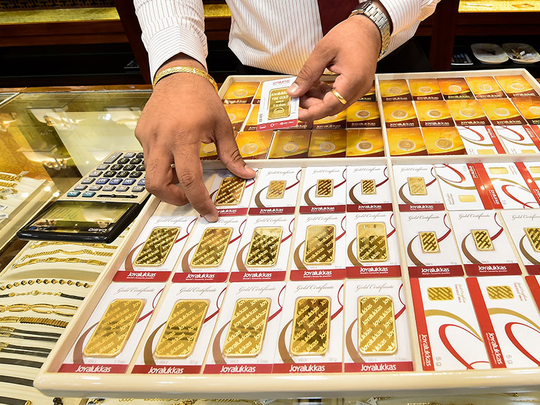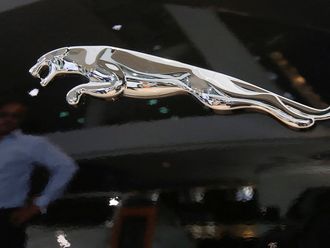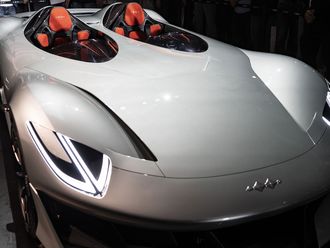
Dubai: India’s gold shoppers failed to turn up at stores in enough numbers between July to end September, resulting in a 25 per cent drop on a year-on-year basis and severely denting overall global jewellery demand this year (2017).
Weak consumer sentiments also hit jewellery buying in the UAE, down 10 per cent year-on-year to 7 tonnes during the three months, and in Saudi Arabia, demand tailed off by 9 per cent to 9.8 tonnes, according to the World Gold Council (WGC).
The near-term forecast for jewellery demand in the UAE will continue to be mixed. According to a senior WGC official, the upcoming VAT implementation will be a “challenge for an already struggling market”.
VAT impact
“If demand continues to remain weak after VAT, it will be up to wholesalers and retailers to decide whether they should be absorbing the VAT rather than pass it on to consumers,” said John Mulligan, Director of Member and Market Relations at London-based WGC. “But there could be a short-term buying surge ahead of the actual VAT implementation.”
Under the VAT regime, the tax will be imposed on the entire jewellery piece at 5 per cent. This, according to local market sources, would entail an additional cost of Dh7-Dh8 on a per gram basis. (This is based on the current price level of Dh145 a gram and with making charges of another Dh10-Dh15 a gram.)
Global jewellery volumes during Q3-17 weighed in at 479 tonnes against 495 tonnes a year ago. It could have been much worse if it were not for Chinese buyers, who finally shrugged off their reluctance and came back into the market strongly. (During Q3-17, gold prices had gone past Dh150 a gram after starting the year at just over Dh130. Currently, it’s at Dh145.50 a gram for 22k.)
According to Mulligan, the lack of consumer support in India is not yet a full-blown crisis. The imposition of the goods and service tax (GST) from July hit sentiments, as did “new anti-money laundering regulations governing jewellery retail transactions”. Indian jewellery uptake in Q3-17 was 114.9 tonnes, down 25 per cent from a year ago. Even the bit of buying that took place during last month’s Diwali season was not enough to stabilise things.
Changes
But even in this environment, changes are taking place. “The bigger jewellery retailers in India are starting to express confidence post-GST... but it’s the smaller retailers who continue to take hits,” said Mulligan. “And they are the ones who are uncertain about how to resurrect themselves.”
This is a sentiment echoed by Joy Alukkas, Chairman of the jewellery retail network that bears his name. “GST is definitely helping the organised sector, i.e., the bigger retailers,” said Alukkas. “We saw that happen clearly during the recent Diwali round of buying, and it will only get more so in the future. It will be difficult for smaller players to adjust in the changed environment.”
Meanwhile, overall global gold demand - including jewellery, institutional buying and the like - was down 9 per cent year-on-year to 915 tonnes, according to WGC. Apart from weak uptake at the retail level, institutional support - especially exchange traded funds - for bullion turned in an indifferent performance.
“With so much focus on the US equity markets, which remain in record territory, investors lowered their exposure on gold,” said Mulligan. “Investors were distracted away from ETFs as a result. But whenever there is the slightest change in the geopolitical situation - as happened in August over North Korea - you still see investors getting back into gold.”
But there was a bit of help from central banks, up 25 per cent year-on-year to 111 tonnes, while bar and coin investment strengthened by 17 per cent to 222 tonnes, “albeit from a low base”.
According to Alistair Hewitt, Head of Market Intelligence at WGC, “Although we saw ETF inflows at 19 tonnes, they were significantly lower than last year. But there were some real bright spots: retail investment demand in China grew for the fourth consecutive quarter; the Turkish and Russian central banks added to gold reserves; and, after years of declines, we also saw increased use of gold in technology, supported by the demand for high-end smartphones.”
The bright and dark spots in gold demand
- Jewellery volumes continue to languish below longer-term average levels, according to World Gold Council.
- Inflows into gold-backed ETFs (exchange traded funds) have “stalled”, with net uptake growing by just 19 tonnes. To put it in perspective, ETFs recorded a 144 tonne influx in Q3-16.
- Total investment demand fell 28 per cent to 241 tonnes compared with 335 tonnes in Q3-16.
- On the bright side, gold bar and coin demand recorded growth, in large part from China. Global investment in bars and coins rose by 17 per cent, from “relatively weak year-earlier levels”.
- Central bank uptake climbed 25 per cent to 111 tonnes from 89 tonnes in Q3-16.












